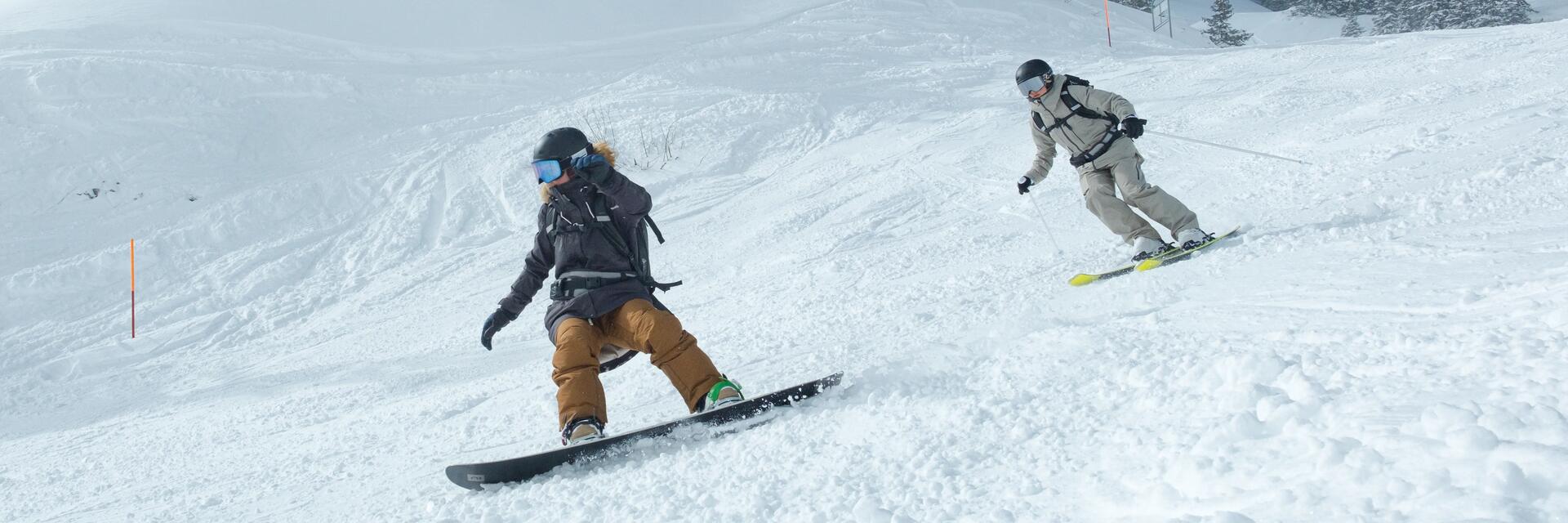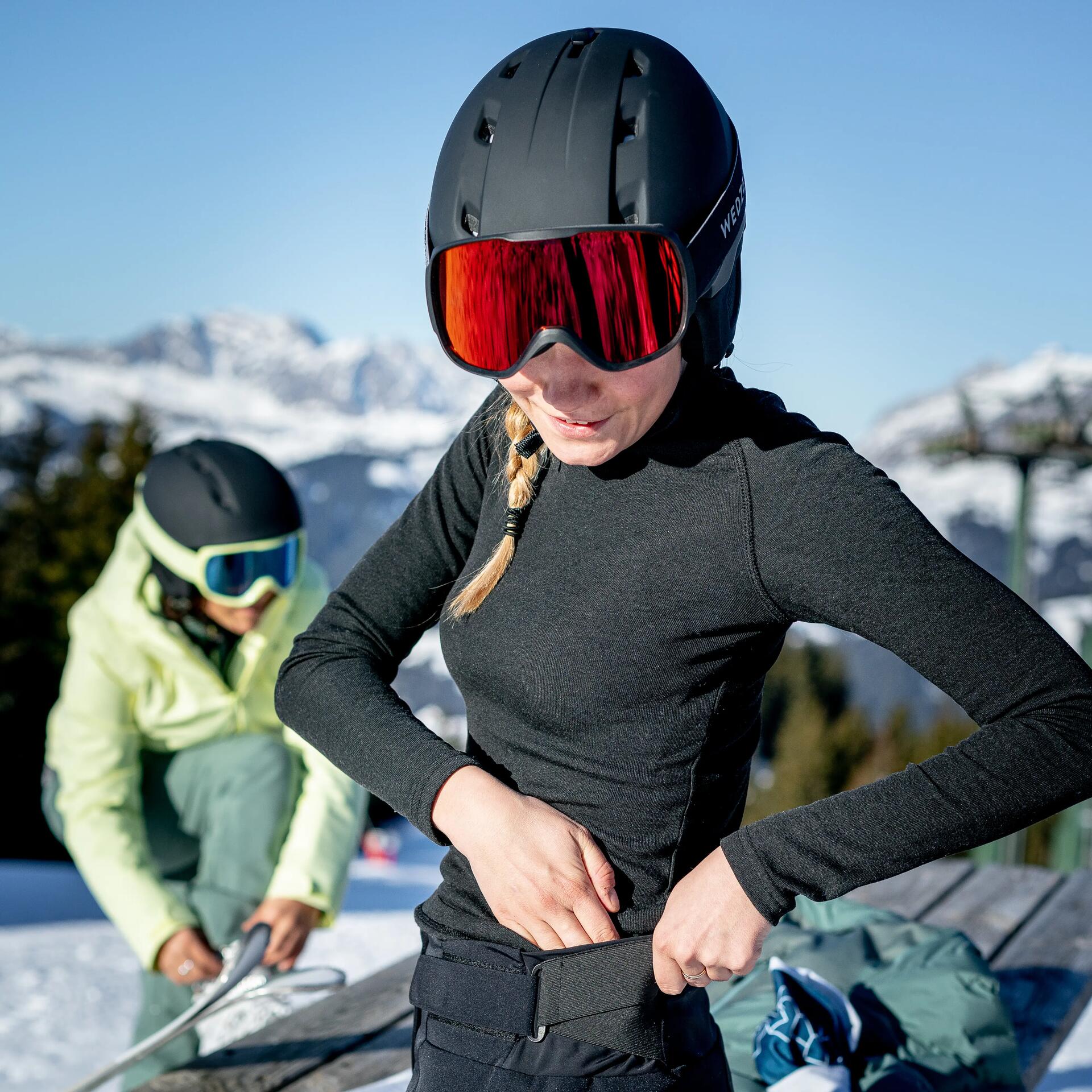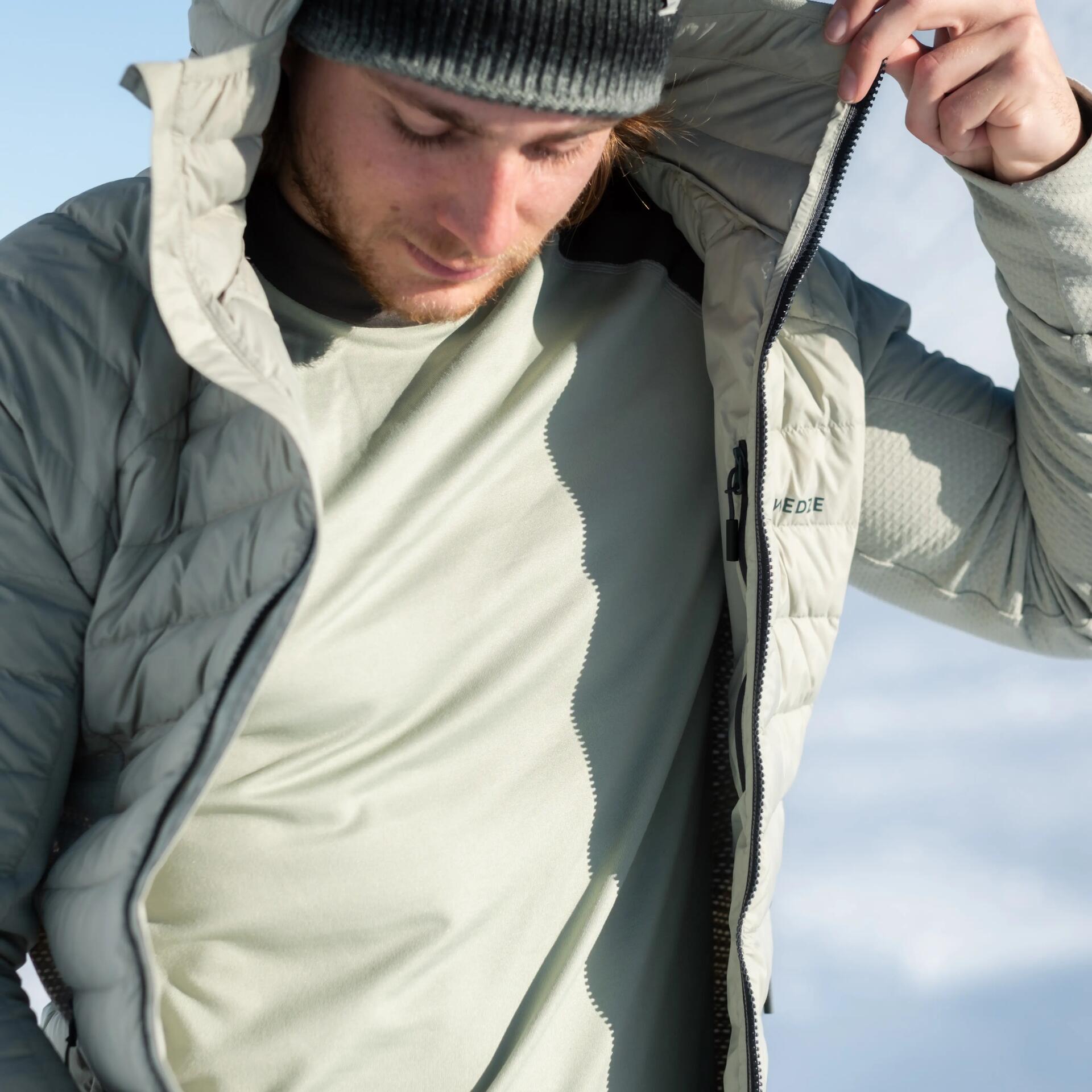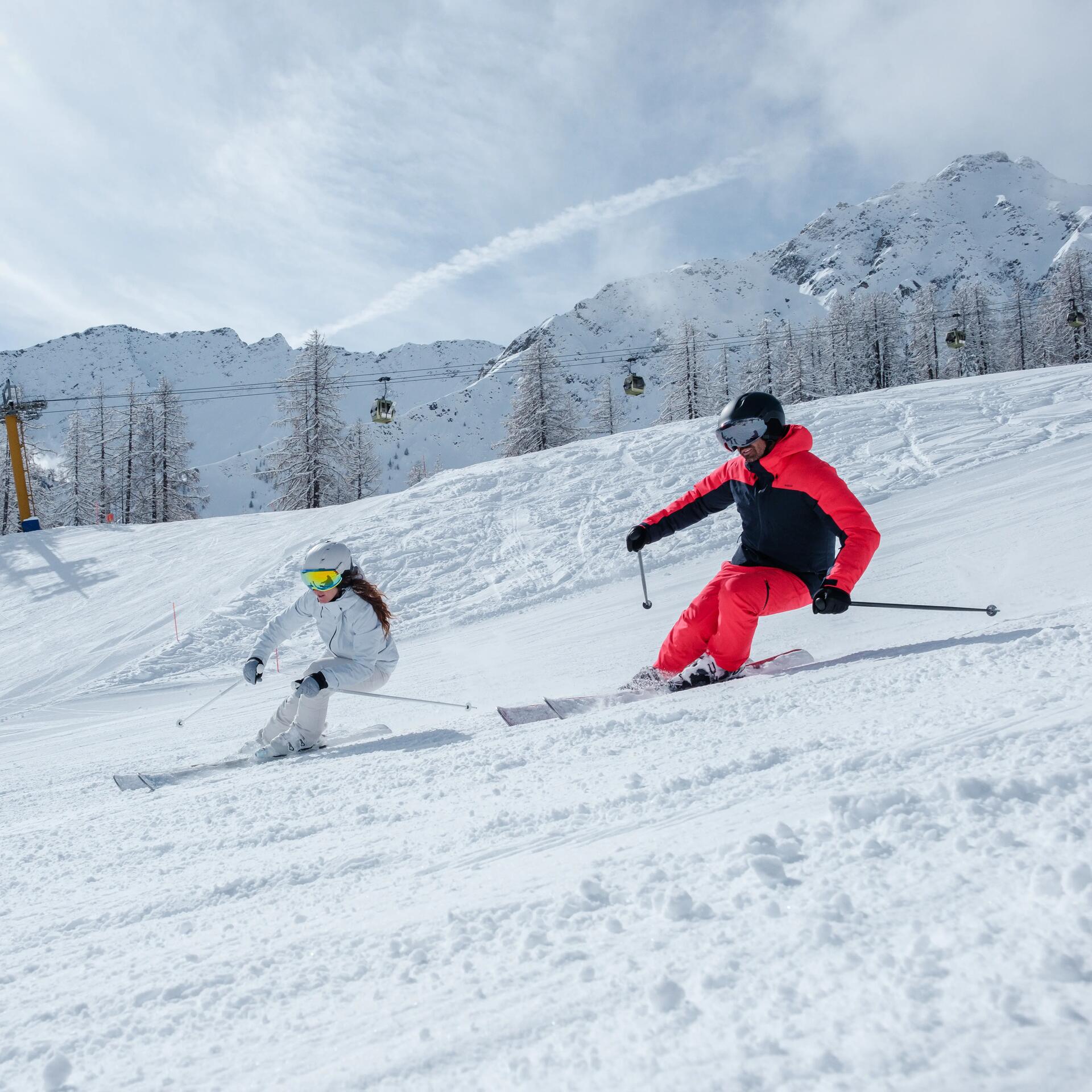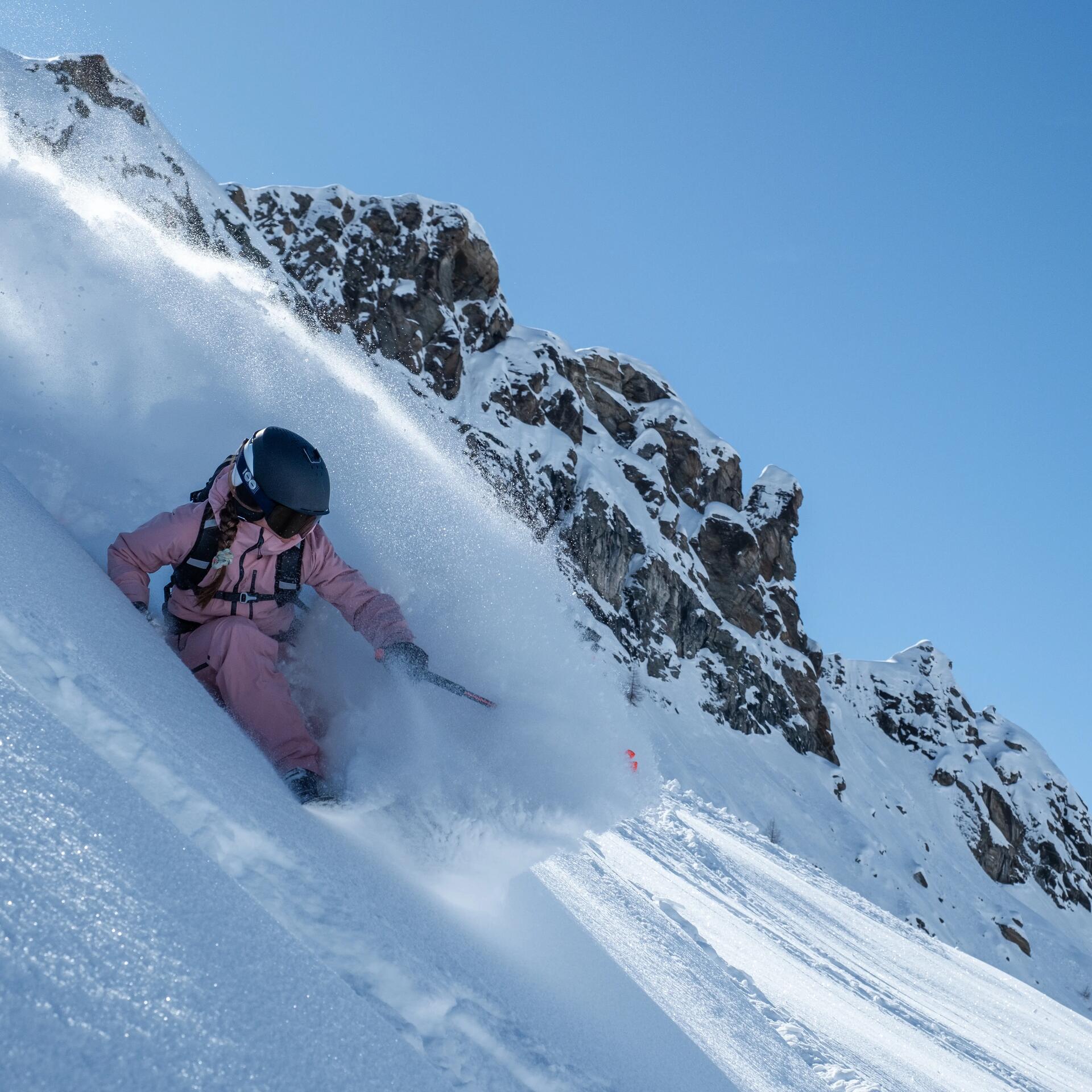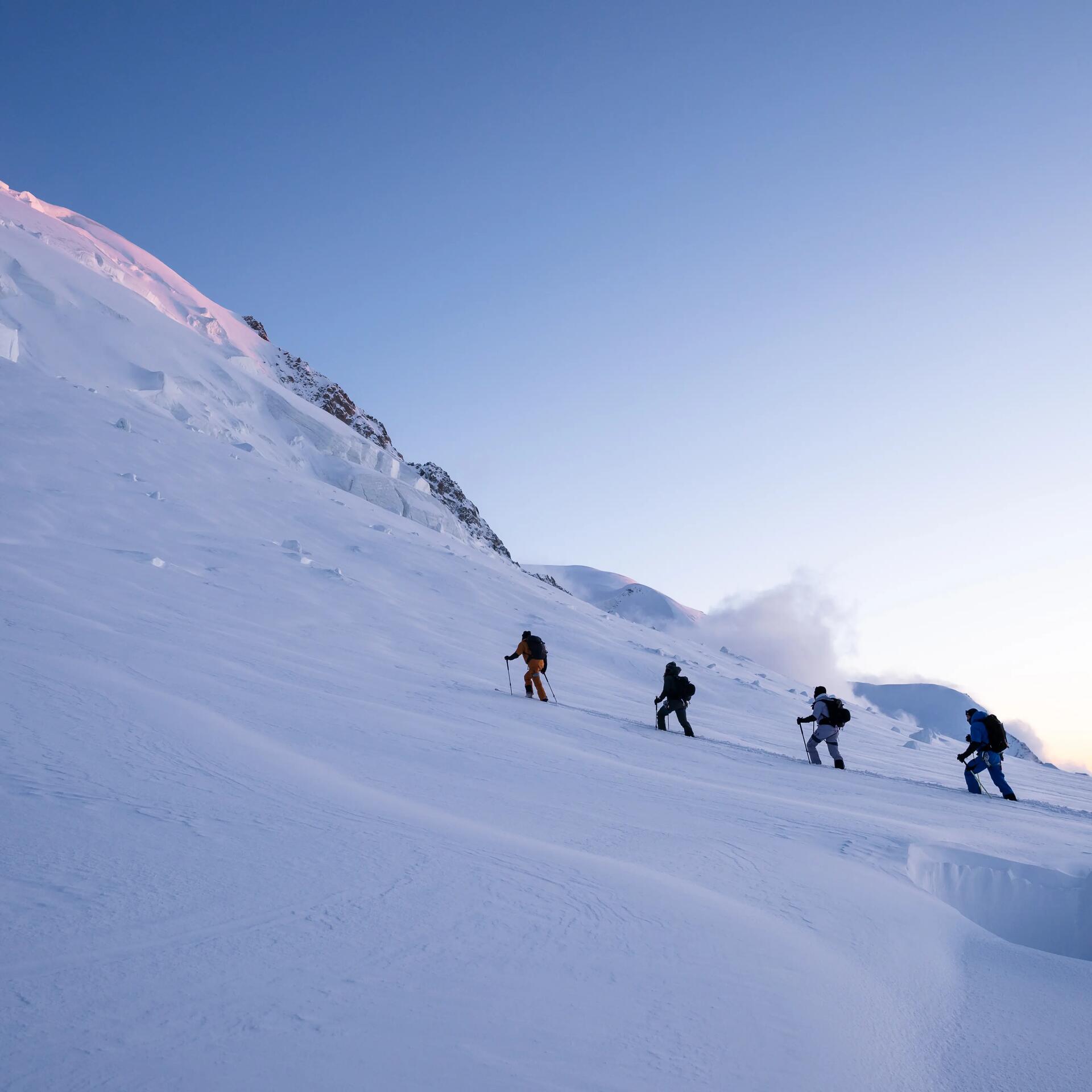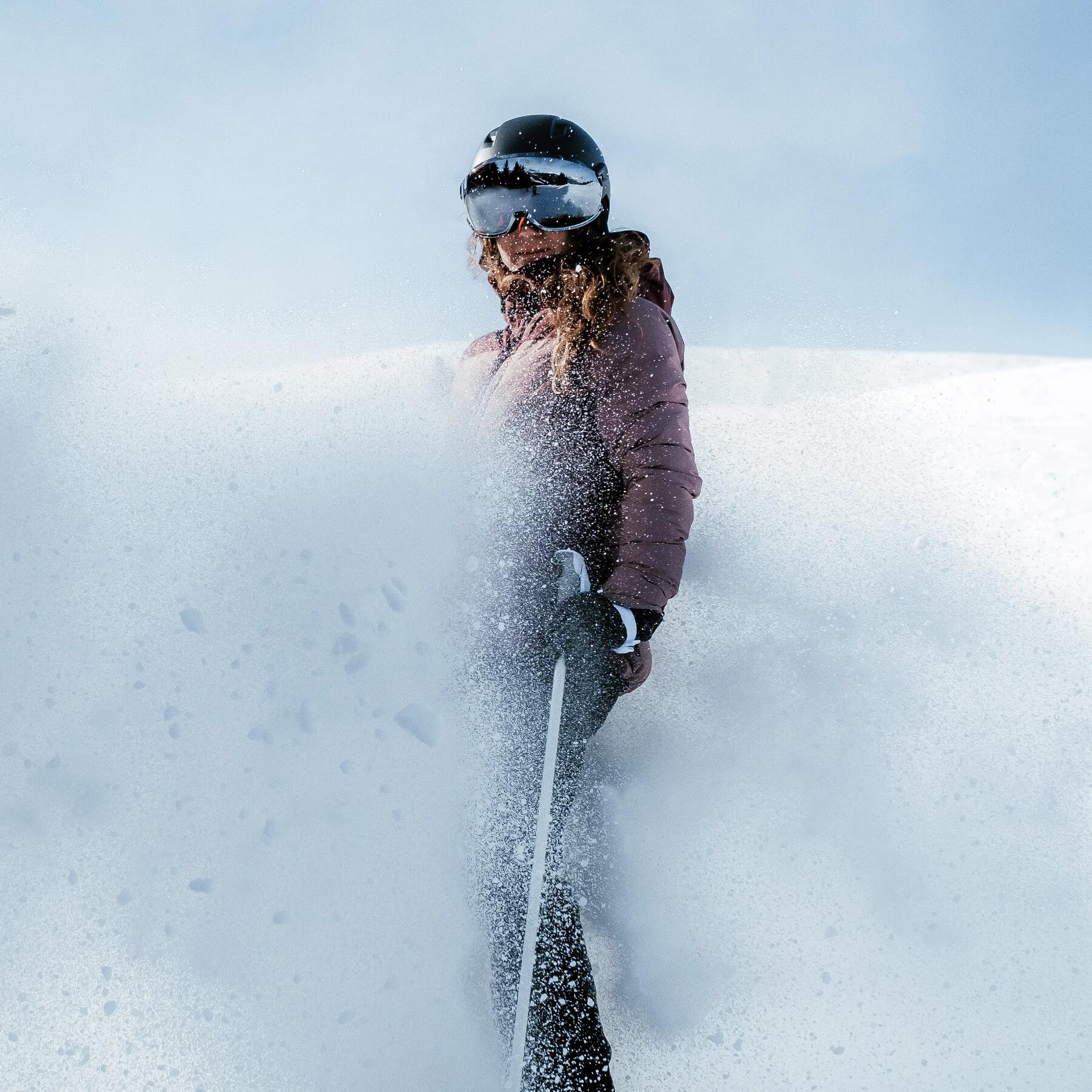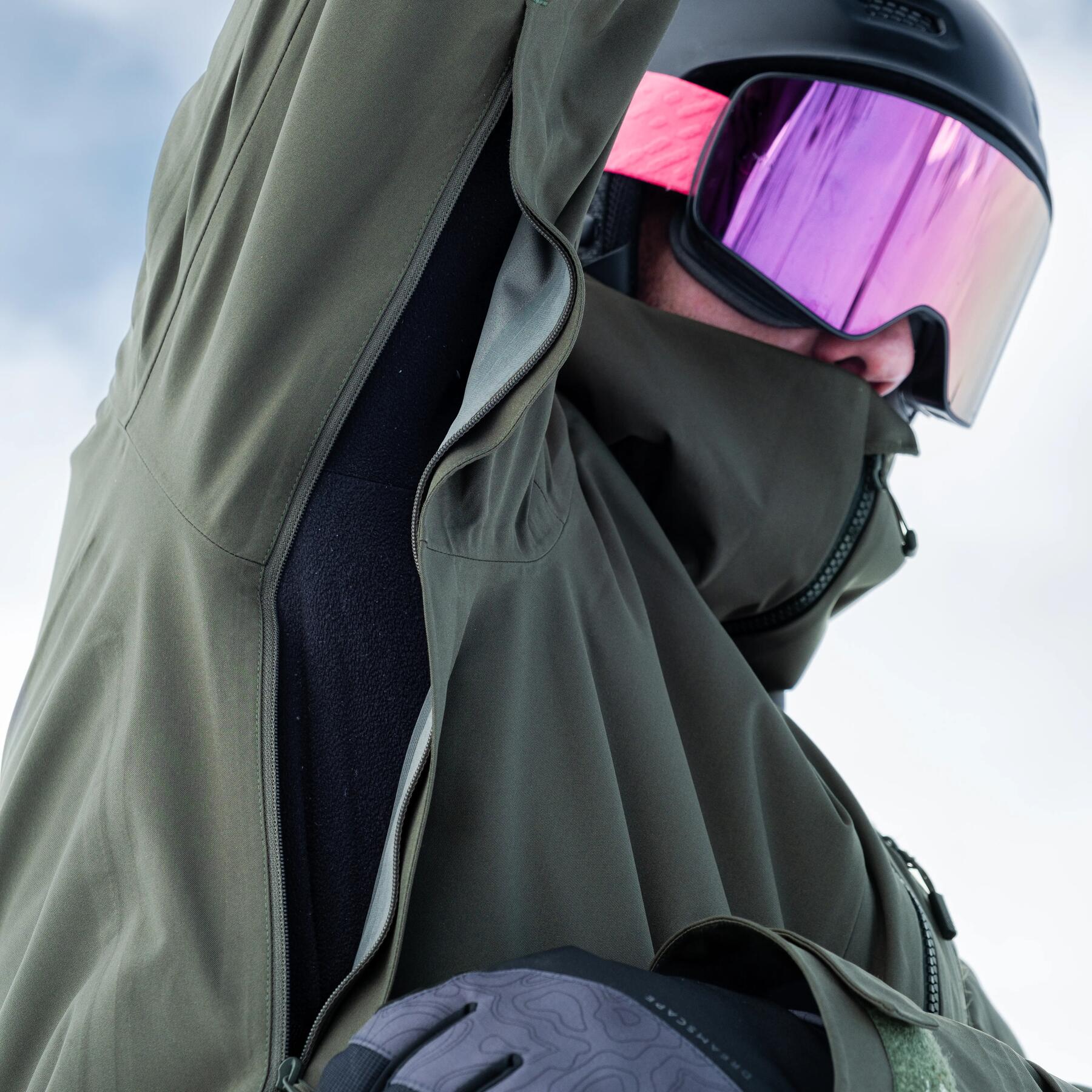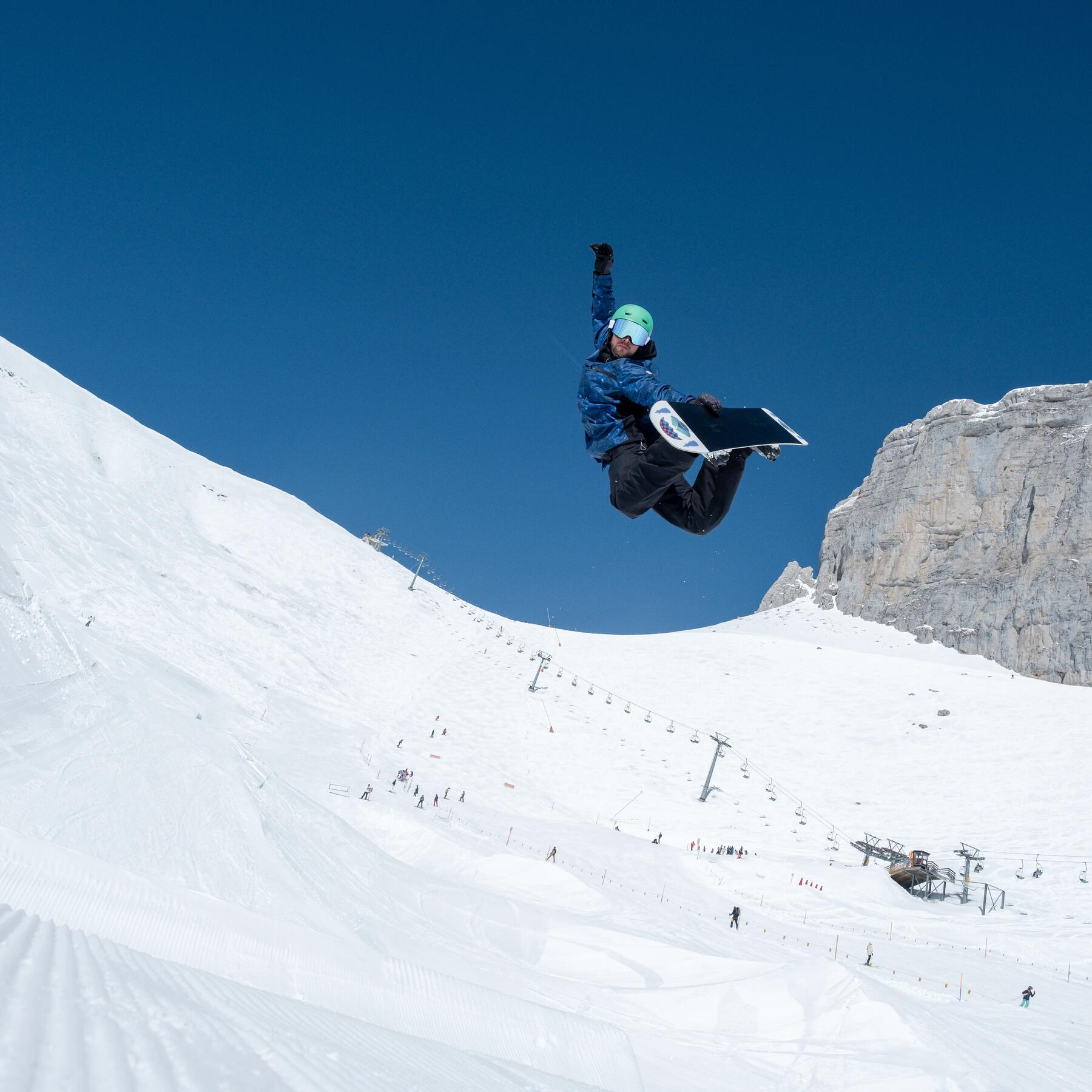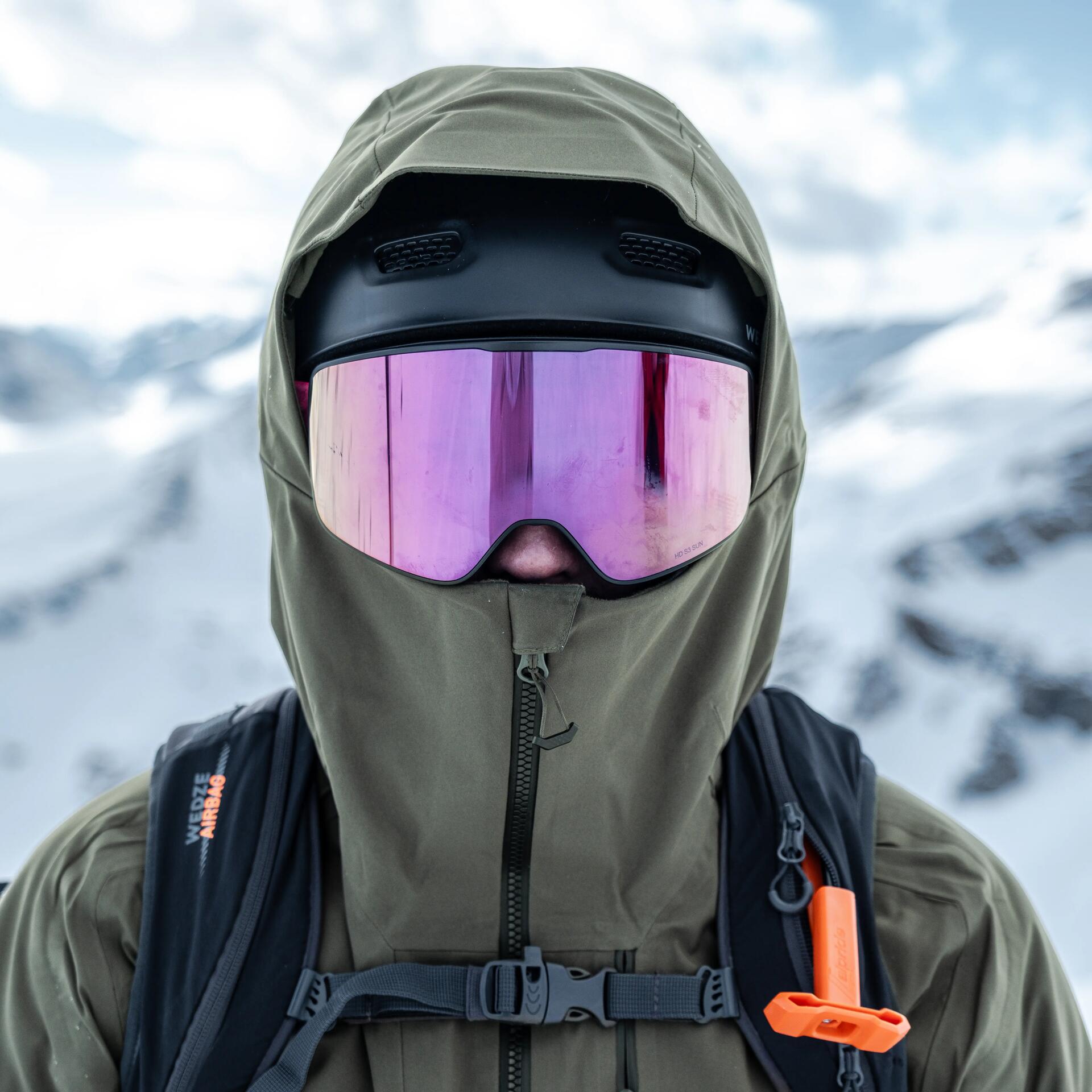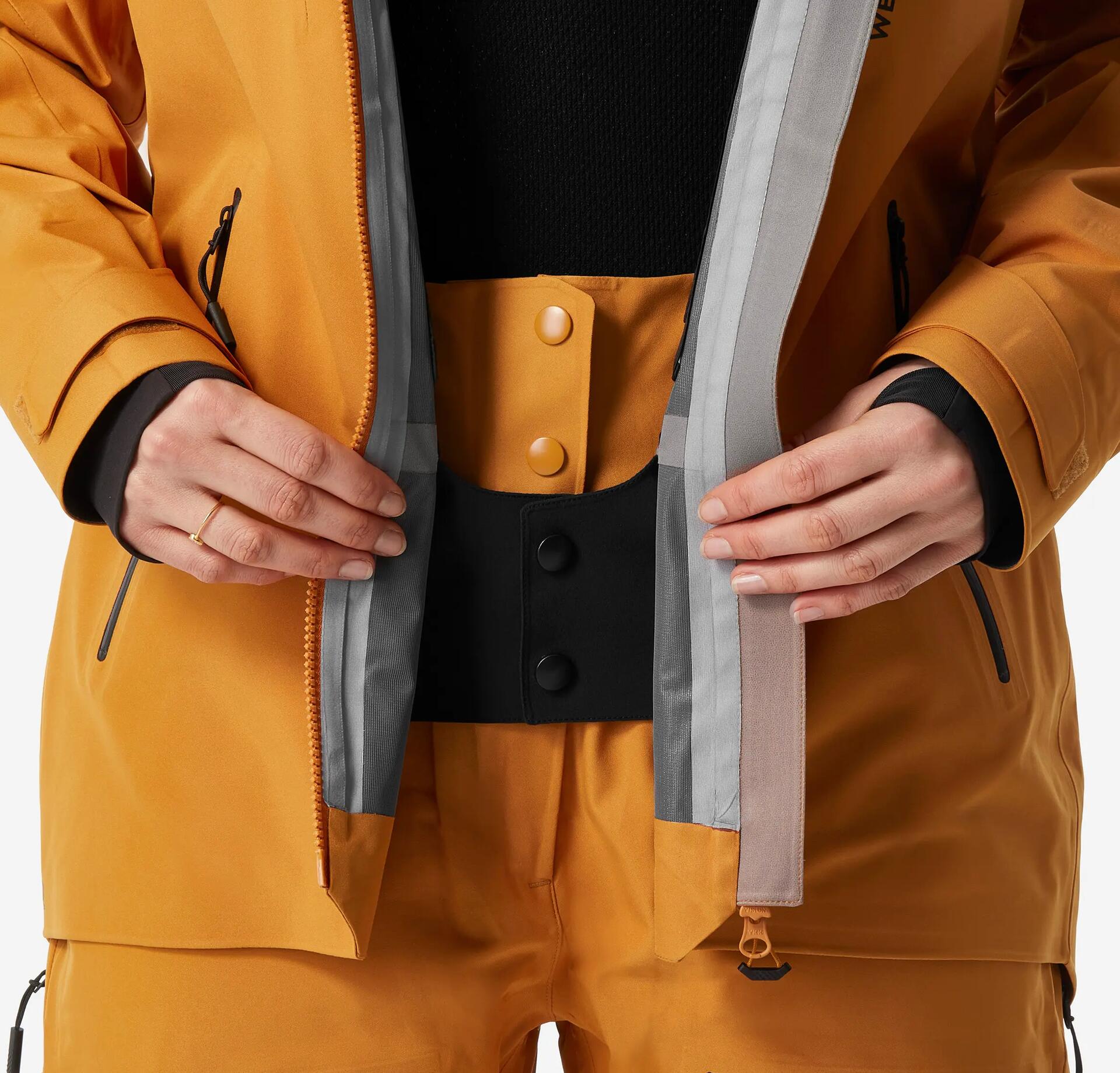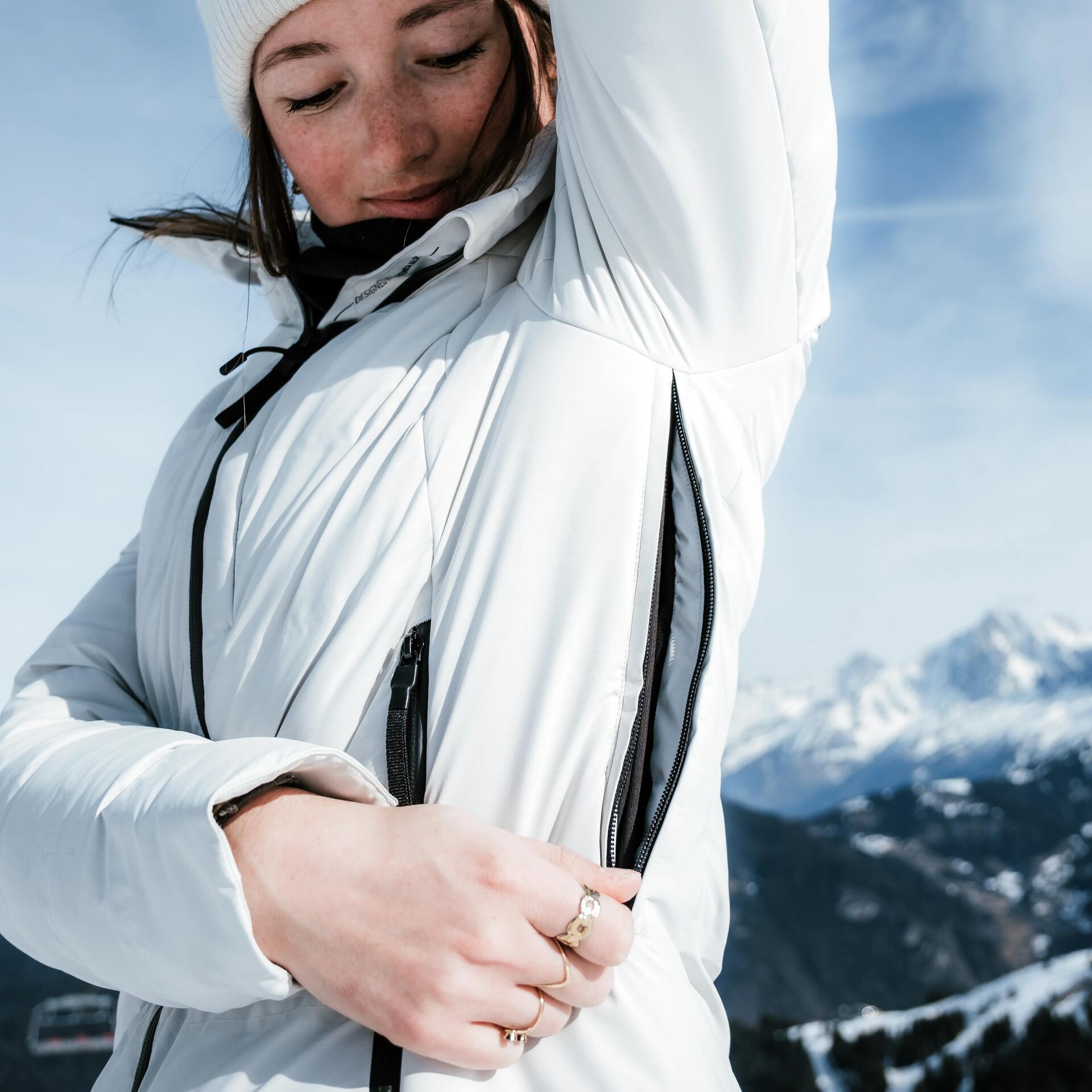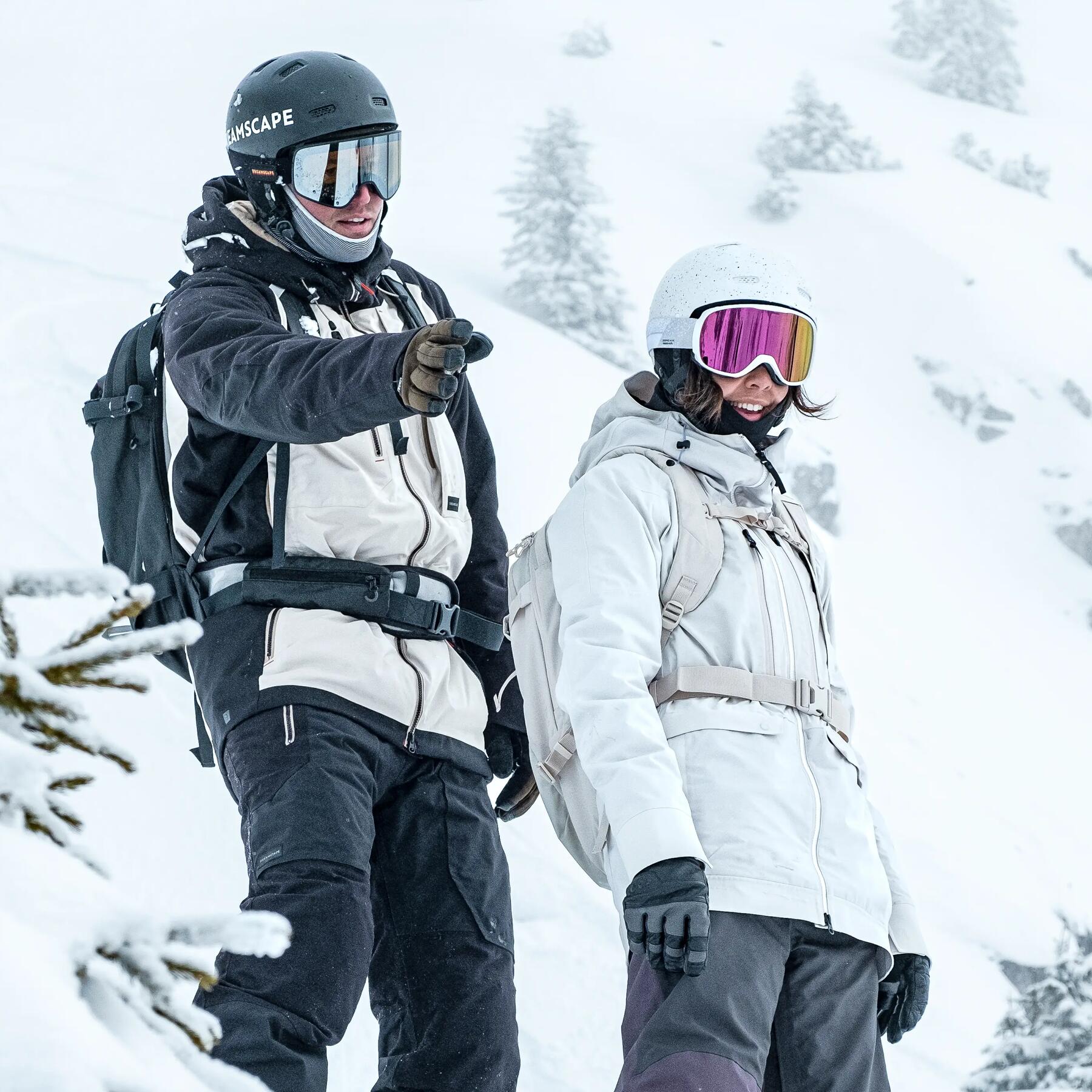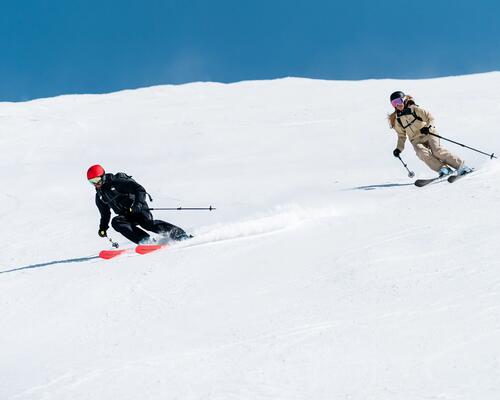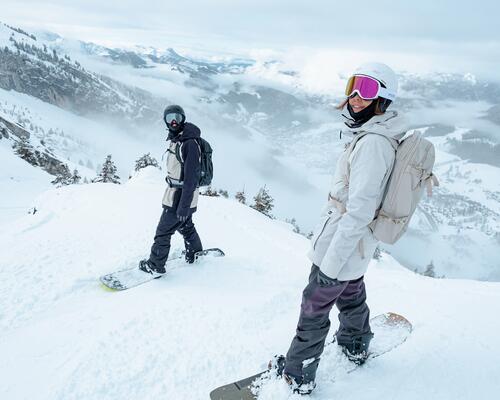Waterproofing and wind resistance are achieved through 2 types of components: coating or membrane.
- The coating is a layer of polyurethane (PU) resin applied directly to the fabric.
- A laminated fabric is a fabric to which a membrane has been applied to make it waterproof. Membranes are generally more effective, more flexible and more durable than coatings.
Next, we look at the waterproof index, which is measured using the Schmerber standard: the higher the index, the better protected you are. The component is subjected to constant water pressure measured in mm. In skiing, the waterproof index is considered good from 10,000 mm Schmerber: which is a good thing as at Decathlon, our jackets fall between 10,000 and 20,000 mm on the Schmerber scale. Finally, the components undergo a water-repellent treatment: this is the ability of a fabric to let water slide off its surface. However, waterproofing does not depend on water repellency.
